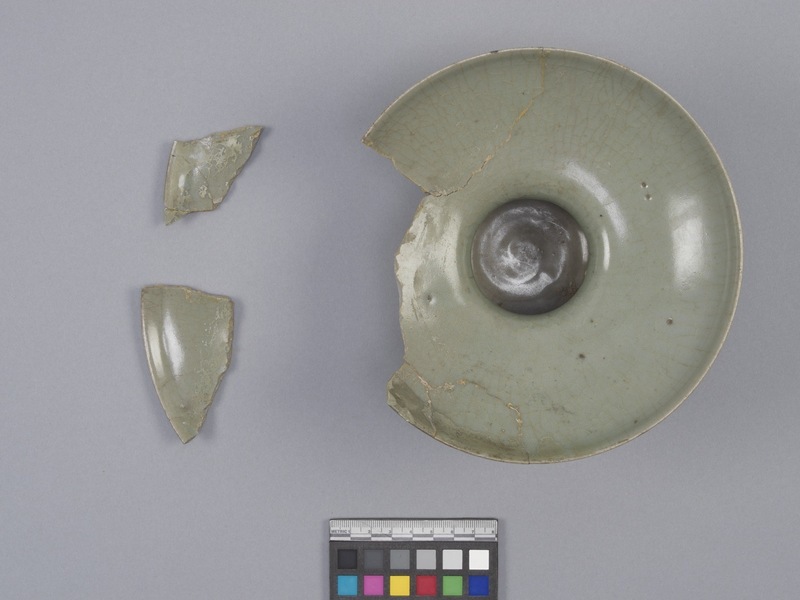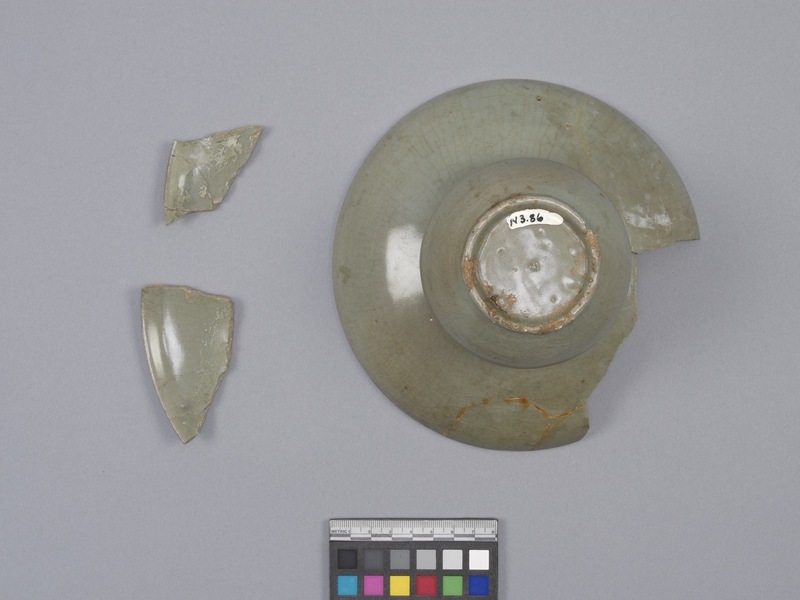Bowl Item Number: N3.86 from the MOA: University of British Columbia


Description
Spittoon style bowl (taho (타호). Bulbous base, then a shallow bowl with a wide flaring rim. Unmarked. Numerous old breaks with old adhesive (three pieces currently).
History Of Use
Celadon taho (타호) were believed to have been used as tea utensils, used for the disposal of tea dregs and leaves, during the Goryeo dynasty of Korea (918–1392). Goryeo celadon 'spittoons' were closely associated with tea culture and tea ceremony. All types of pottery produced during the Goryeo dynasty (고려; 高麗; 918–1392) are referred to as Goryeo dojagi (Goryeo ware; 고려도자기; 高麗陶磁器). Celadon wares (green-grey glazed ceramics), known as Goryeo cheongja (고려청자; 高麗青磁), were the main type of ceramic produced during this period in Korea. Celadon originated in China, and Goryeo potters learned the techniques from the traditions of the Song dynasty (960–1279). The Buan (부안군) and Gangjin (강진군) regions in Jeolla Province (전라도) became major production centres by the mid-twentieth century, and Gangjin remains the production centre of the revival of Goryeo cheongja and modern celadon. Tea was introduced to Korea from Tang dynasty (618-907) China as early as the seventh century. During the Goryeo dynasty tea was used in royal and Buddhist ceremonies as well as in daily practice. An establishment called Dabang (다방; 茶房) was established for serving tea. As time passed, drinking tea in daily life thrived among the royal family, nobility, monks and elites. The prevalence of tea drinking and the demand for tea utensils stimulated the development of the Korean ceramic industry, leading to the creation of various types of high-quality celadon tea utensils such as bowls, cups, cup stands, and ewers.
Narrative
Collected by J. H. Morris while he was chief engineer for Seoul Railway, Korea.
Specific Techniques
The upper and lower parts would have been made separately, then attached together afterward.
Item History
- Made in Korea
- Collected between 1899 and 1939
- Owned by Marion Stephan before August 1964
- Received from Marion Stephan (Donor) during August 1964
What
Who
- Culture
- Korean
- Previous Owner
- Marion Stephan
- Received from
- Marion Stephan (Donor)
Where
- Holding Institution
- MOA: University of British Columbia
- Made in
- Korea
When
- Collection Date
- between 1899 and 1939
- Ownership Date
- before August 1964
- Acquisition Date
- during August 1964
Other
- Item Classes
- ceramics
- Condition
- poor
- Accession Number
- 0113/0084